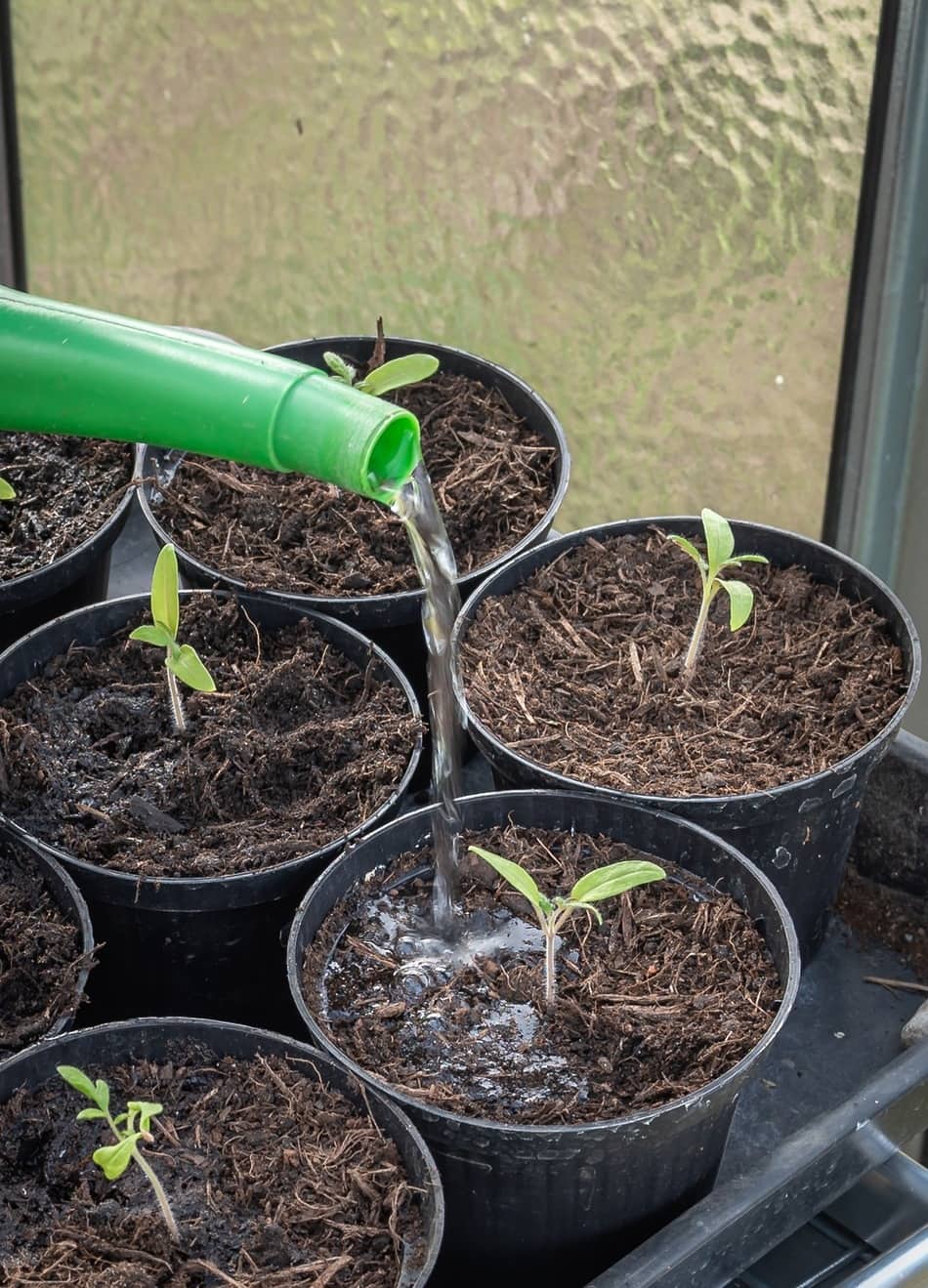The question is: How much water tomatoes in pots need? Well, watering your plants correctly has a fundamental role in the development of the plant. Too little water can be a problem, but watering too much is also harmful to the plant. When we grow tomatoes in containers it becomes even more critical since the correct volume of water and proper drainage will help the correct development and avoid the appearance of harmful diseases.
The fastest and easiest way to know when and when to water your tomatoes is by doing a test each time we are going to water since evapotranspiration varies from day to day. Doing a daily test will tell us the need for the plant. To do the test we only insert the finger 2 inches and check if the soil still feels wet or not, if we notice that the soil is dry we water to the point of noticing that the soil stops absorbing the water. Below are the points that determine the amount of water your tomatoes need and what points to take into account to avoid diseases and guarantee healthy and rich tomatoes.
Container Size
The size of the container/pot is important as it establishes the amount of soil in which the tomato will grow. Both small containers and large containers have their advantages and disadvantages when it comes to watering.
Large Containers: they are ideal when it comes to containing and storing a large amount of water. and nutrients, in addition to better regulating soil temperature due to the greater volume of soil. However, they can be big and that could be a problem if you are growing indoors.
Small Containers: although small containers are comfortable due to their size and we can practically place them anywhere, they are not ideal since the volume of soil can be little for the plant. Small containers must be constantly monitored due to the high evapotranspiration generated by the lack of temperature regulation. and high fluctuations in temperature and humidity can cause disease and poor fruit set.
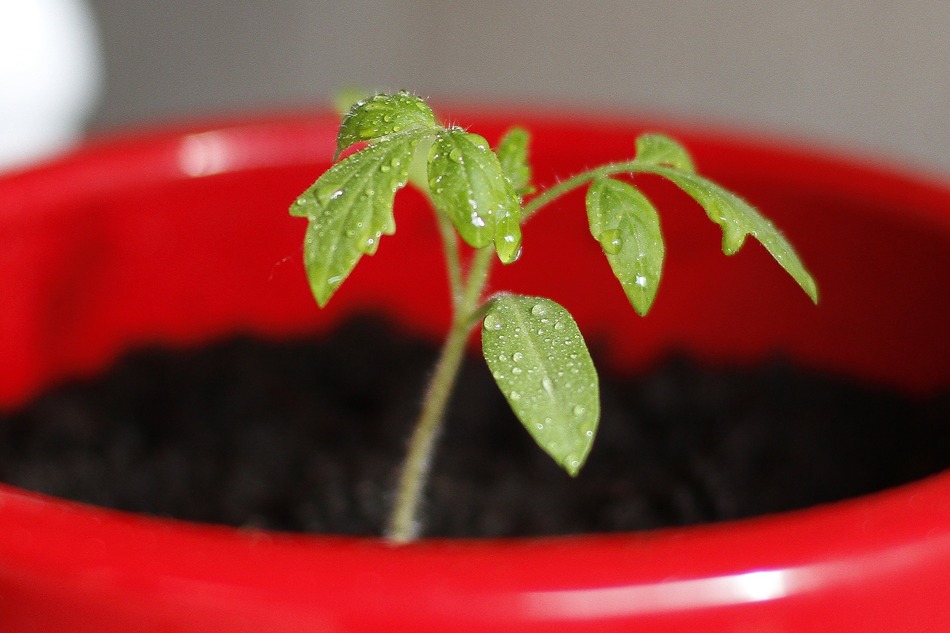
Watering Time
Watering time is important as it will determine when the plant will have the main component it needs to grow. Watering in the morning is recommended and ideal. since the plant will have water throughout the day and combined with light it will be able to photosynthesize. But it is also recommended to water in the morning because conditions that can lead to diseases are avoided. If we water at night we expose the plant and the soil to humid conditions for long periods, ideal conditions for the development of fungi and diseases.
How much water tomatoes in pots need?
The amount of water will depend on the stage of the plant. A general rule is a continuous supply of water according to the plant’s requirements, we must keep the soil moist but without flooding, we must also take into account that in the final stages the fluctuation of humidity can cause problems such as fruit breakage.
Too much water can cause the plant to die from drowning or excessive humidity with high temperatures can be a conducive medium for diseases to proliferate. As we discussed at the beginning, the best method to determine if the plant needs is to squeeze the soil and check the humidity. On the contrary, too little water can cause a bad development of the plant, either in stature or finally a very small fruit.
Let’s not forget that when we grow tomatoes in containers we must make sure they have good drainage. 2-3 holes in the base of the container are ideal.
The most important stages are at the beginning of the crop, when the plant is establishing itself, the plant must develop strong and dense roots to guarantee optimal development. If we water very superficially, we can cause the plant to develop very superficial roots which in turn will cause problems when the plant loads its fruits, it will have a weak structure. The second most important stage is in the flowering and the loading of the fruits, a constant supply of water is essential to develop large fruits. It may be that in the final stages it is necessary to water twice. Once the fruit has stopped growing, we can water less frequently, this will help the fruit to ripen and set.
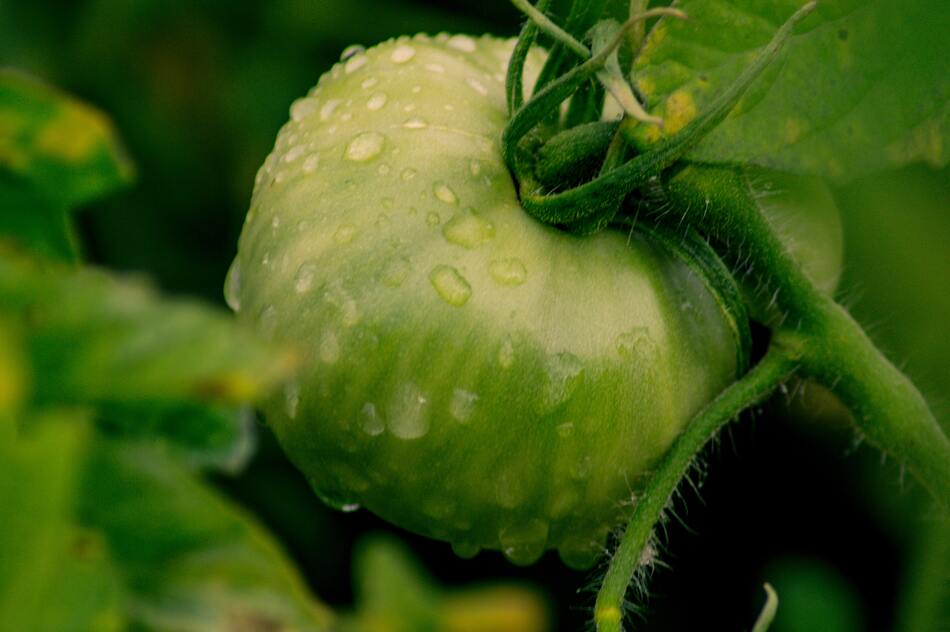
Sanitary Problems Related to Irrigation
As we mentioned earlier, excessive watering or lack of watering can cause various problems for both the fruit and the plant itself.
We must be clear that all fungal and bacterial diseases of tomatoes develop in high humidity and temperature situations. We recommend watering only in the mornings and avoiding watering at night, this doesn’t mean that if you water 1 night you are doomed. Is also recommended to water directly to the roots, avoiding splashing the leaves as much as possible. It is a mistaken belief that plants should be watered on the leaves, however, they are cooler on hot days this represents bad practice since they encourage the development of diseases.
We detail the most common problems in tomatoes related to irrigation and how to avoid or solve them.
Blossom end rot (BER):
It is a known problem in tomatoes and quite common, although it is not a fungal disease or caused by bacteria, it is rather a calcium deficiency. The problem lies in the supply of calcium to the plant, if we do not water frequently and leave the soil dry the plant cannot absorb enough calcium from the soil and the same happens when we water excessively, there is too much calcium available that ends up being harmful to plant.
How do we fight it? First, we must remove all affected fruit, these fruits are no longer ideal for consumption and only use the energy of the plant that we can leave to be used by healthy fruits. In addition to removing the affected fruits, good irrigation practices are the best solution, although it is a calcium deficiency, it is very rare that we find this origin in the soil, however, if we see that by watering continuously and without flooding the new fruits as well have the problem, we can fertilize our soil with fertilizers rich in calcium. In this way, watering our plant frequently without exceeding ourselves, not leaving it dry for prolonged periods will avoid the BER. If we don’t have time to water every day, we can use mulching that will help keep moisture.
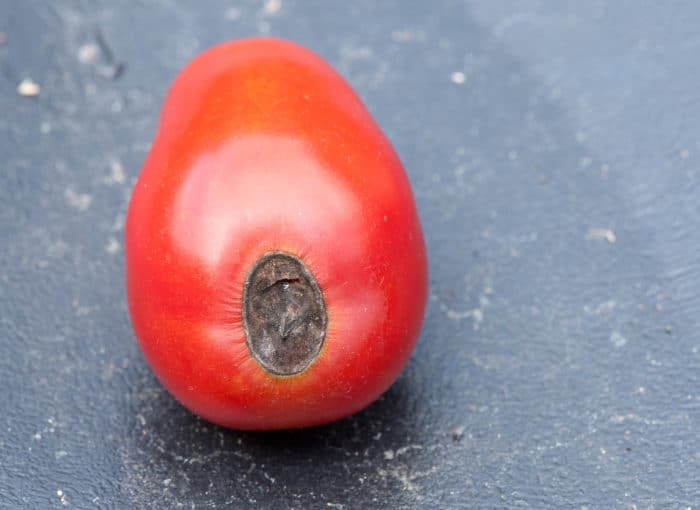
Tomatoes Splits
Occurs when there is an inequality in the distribution of water. It generally occurs when we have prolonged periods of drought and rain or aggressive irrigation is received that makes the tomato inside develop faster than the outside, which generates stress and finally the breakage of the skin. In any case, it is not a problem that results in a loss of harvest or of the final product. These fruits are suitable for consumption, however, they must be harvested as soon as possible, since the breakage can start fungal or bacterial diseases since the interior of the tomato is exposed.
How do we avoid it? The tomato split is avoided with continuous and moderate irrigation, important not to go to extremes. If we are facing the situation of a plant with a lot of water stress and a prolonged drought, we can water in an escalating way, not all at once, so that the plant assimilates it little by little and a water shock does not occur due to excess.
Another way to prevent split tomatoes from happening is to ensure that the container has proper drainage, also resistant varieties are very useful.
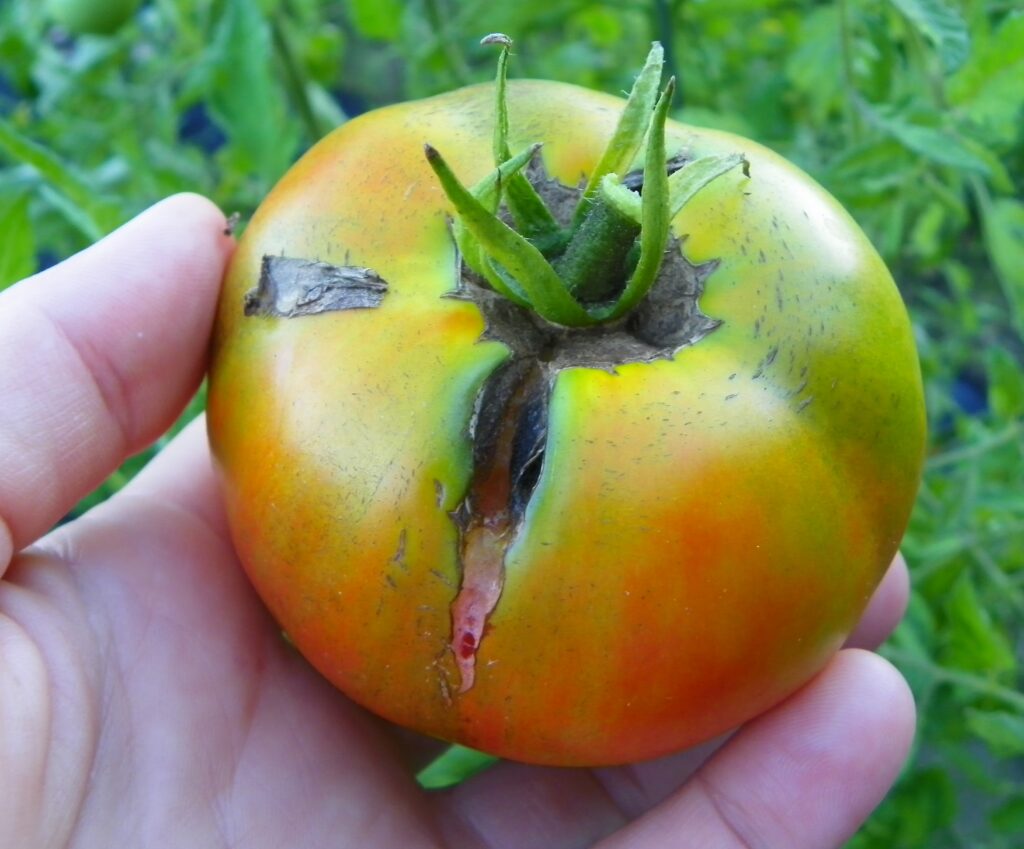
Wrap Up – How much water tomatoes in pots need
In summary, the amount of water that your tomato needs vary greatly depending on your pot size, temperature, and time of watering.
Larger pots/containers will store water for a longer period of time and with the help of mulching, irrigation can be extended more. On the other hand, smaller pots lose water faster and are more susceptible to problems related to irrigation.
The general rule is to check every time we are going to water, squeezing with our fingers and water only if we notice dry soil. All waterings should be done in the morning to avoid diseases and should be done pointing to the root and not the leaves.

